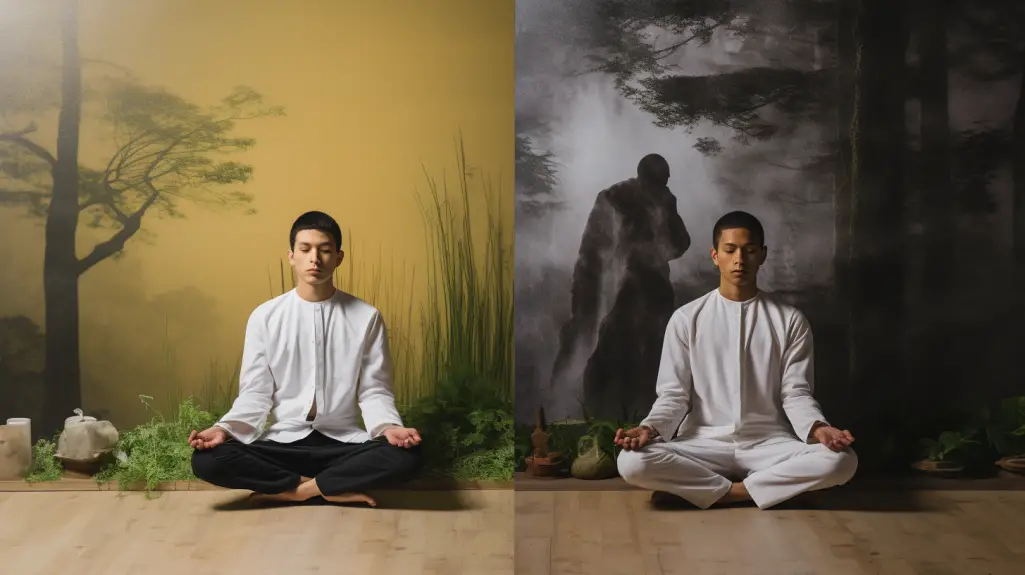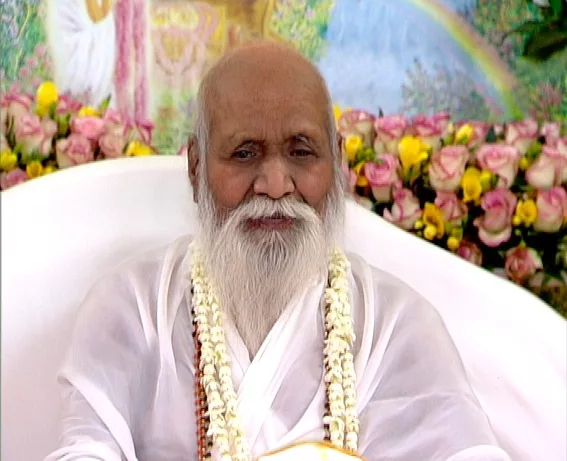Is Transcendental Meditation a Cult? Diving Deep into the TM Movement

Transcendental Meditation (TM) has become a global phenomenon, with many embracing its techniques for relaxation and self-realization. However, there have been concerns and debates surrounding its movement, with some arguing that it bears resemblance to a cult. This article aims to provide an unbiased analysis, examining the historical context, practices, and controversies surrounding TM, ultimately addressing the provocative question: Is the Transcendental Meditation Movement a cult?
Transcendental Meditation (TM) is a meditation practice that has gained popularity worldwide for its relaxation and self-realization techniques. However, there have been concerns and debates surrounding its movement, with some arguing that it bears resemblance to a cult. While there are cult-like aspects to the TM organization, the practice itself is a form of meditation like many others. The TM movement is multifaceted, with both commendable and controversial dimensions.
Key Takeaways:
- TM’s endorsement by celebrities offers both credibility and skepticism.
- Scientific research on TM provides mixed results on its unique benefits.
- While there are cult-like aspects to the TM organization, the practice itself is a form of meditation like many others.
- The TM movement is multifaceted, with both commendable and controversial dimensions.
Historical Background of Transcendental Meditation

Origin and Expansion
Transcendental Meditation (TM) was introduced to the West by Maharishi Mahesh Yogi in the late 1950s. Originating as the Spiritual Regeneration Movement, it aimed to bring about world peace through group meditation. TM has since grown to become a large multinational movement, with its reach spanning the globe.
Maharishi’s mission was rooted in Hindu teachings, although TM proponents often emphasize its secular nature. This technique became widely popular in the 1960s, largely attributed to the Beatles, who practiced TM and were vocal proponents.
Patrick Ryan and the TM Controversy
Patrick Ryan, a well-known critic of various movements, raised concerns about TM. He argued that some aspects of the TM organization resembled cult-like structures. His arguments became a foundation for subsequent debates on the subject, prompting deeper investigations into the nature of TM and its practices.
Understanding the TM Practice
Basic Tenets of TM
Transcendental Meditation is a meditation practice involving the use of a mantra, which is a specific sound or phrase used to facilitate deep relaxation and self-realization. TM teachers guide practitioners in finding their unique mantra.
The primary aim of the TM technique is to achieve a state of restful alertness, where the mind is calm, yet awake. Many describe the TM experience as both therapeutic and transformative.
Fairfield, Iowa: A TM Hub
Fairfield, Iowa, is significant in the TM movement. It is home to the Maharishi International University, a higher education institution that offers courses in TM, the Science of Creative Intelligence, and other fields. Many TM enthusiasts migrate to Fairfield, building a real TM community, where group meditations and advanced courses supplement the TM technique.
Advanced Techniques and Yogic Flying
One of the advanced programs within TM includes an advanced meditation practice called “Yogic Flying.” This practice, often showcased in TM promotional materials, involves practitioners hopping while in a cross-legged position, aiming to achieve brief moments of “levitation.
Cult Characteristics: Does TM Fit the Profile?
Defining a Cult
A cult is generally understood as a group with extreme or unconventional beliefs and practices, often centered around a charismatic leader. Steven Hassan, a well-respected expert on cults, lists several characteristics, including controlling behavior, suppressing dissent, and isolating members from external influences.
TM’s Alignment with Cult Characteristics
Given the definition, does TM fit the profile? While TM has a centralized structure and a figurehead in Maharishi Mahesh Yogi, it’s essential to differentiate between an organized movement and a cult. TM does have practices and beliefs, but whether these involve beliefs and systems comparable with other kinds of relaxation therapies is a matter of ongoing debate.
Criticisms and Defenses
Critics like Patrick Ryan argue that the TM movement has exhibited cult-like behaviors, especially in its advanced courses. In contrast, proponents emphasize the numerous benefits of TM, from reducing high blood pressure to reducing negative personality traits.
Yogic Flying and Other Advanced TM Programs

Unpacking Yogic Flying
Yogic Flying, as mentioned earlier, is an advanced TM technique. The TM organization claims that when practiced in large groups, it can bring about positive societal changes, including world peace. However, skeptics question its efficacy and the scientific basis for such claims.
Other Advanced Courses
Apart from Yogic Flying, the TM movement offers several advanced courses, aiming to deepen the meditation practice and explore higher states of consciousness. These courses, like the TM-Sidhi program, build upon the foundational TM techniques, promising profound spiritual and personal growth.
Remember:
- Transcendental Meditation originated from Hindu teachings and was popularized in the 1960s.
- TM involves the use of a mantra to achieve deep relaxation and self-realization.
- Fairfield, Iowa, is a significant hub for TM enthusiasts and practitioners.
- Debates continue about whether TM exhibits cult-like characteristics.
- Advanced TM programs, like Yogic Flying, remain both popular and controversial.
The Role of Celebrities in Popularizing TM
Celebrity Endorsements and the Rise of TM
Celebrities have played an undeniable role in popularizing Transcendental Meditation. Notably, the Beatles’ association with Maharishi Mahesh Yogi in the 1960s catapulted TM to global fame. The Beatles’ journey to India and their subsequent practice of TM caught the world’s attention.
Modern Celebrity Advocates
Modern-day celebrities like Jerry Seinfeld and the philanthropic efforts of the David Lynch Foundation have kept TM in the limelight. The foundation, in particular, has promoted the practice of Transcendental Meditation in schools, prisons, and among veterans, garnering both appreciation and critique.
Analyzing the Influence
The celebrity endorsement has its pros and cons. While it has introduced TM to a broader audience, it also brings with it the risk of oversimplification or misunderstanding of the practice. Critics argue that some celebrities approach TM as a trend, while others genuinely believe in its transformative potential.
Transcendental Meditation in Popular Culture
TM’s Cultural Impact
From its inception, TM has been embedded within popular culture. Apart from the Beatles, movies, TV shows, and books have showcased or referenced TM, reflecting society’s fascination and sometimes skepticism about the practice.
Portrayals in Media
The Washington Post, among other prominent news service outlets, has covered TM. While some portrayals emphasize the benefits of meditation for mental and physical health, others focus on the controversies surrounding the TM movement, especially when discussing its advanced courses.
Reflection or Propagation?
Media portrayals are double-edged. They can serve as a reflection of society’s views, or they can influence them. TM, with its rich history and association with famous personalities, provides ample material for pop culture narratives, be it in a positive or negative light.
Fairfield, Iowa: The TM Movement’s Epicenter

A City Transformed
Fairfield, a town in Iowa, has been profoundly influenced by TM. Home to the Maharishi University of Management (now Maharishi International University), the town has seen an influx of TM practitioners over the years. This migration has transformed Fairfield into a hub for those seeking spiritual growth and self-realization through Transcendental Meditation.
Life in a TM Community
In Fairfield, group meditations, TM teacher training sessions, and advanced courses supplement the TM technique, creating a vibrant community centered around the practice. The town operates on principles of the “Age of Enlightenment,” with the belief that collective meditation can bring about societal transformation.
The Criticisms
However, like any concentrated movement, life in Fairfield has its critics. Some argue that the community exhibits cult-like behaviors, from its insular nature to the intense focus on Maharishi’s teachings. The debate about Fairfield mirrors the broader conversation about TM’s place in society.
Scientific Validation: Does Research Support TM’s Claims?

Research Endeavors on TM
Over the years, many studies have attempted to understand the effect of Transcendental Meditation on physical and psychological health. Benefits of TM, such as reduced high blood pressure, have been documented. However, the breadth and quality of this research vary.
Analysis and Meta-Reviews
A systematic review and meta-analysis of research on TM indicates that while there are undeniable benefits, TM may not be universally superior to other meditation practices or relaxation therapies. The psychological effects of meditation, be it TM or another kind, can be profound, but it’s essential to view findings critically.
TM’s Response to Research
The TM organization often highlights studies that show the practice in a positive light. The introduction of Transcendental Meditation and its teachings in schools, for instance, is backed by research showing its positive impact on students’ well-being. However, it’s crucial to note that not all research on TM is universally accepted, and some studies have been critiqued for bias.
The Controversies Surrounding TM: Cult or Community?

The Cult Debate
What Defines a Cult?
The term “cult” has been thrown around in discussions about the TM movement, especially in relation to its advanced programs like yogic flying. But what truly defines a cult? Cults are generally characterized by:
| Feature | Description |
|---|---|
| Charismatic Leader | An authoritative figure at the helm, often treated with blind devotion. In the case of TM, Maharishi Mahesh Yogi played this role. |
| Isolation | Creating barriers between members and the outside world. TM communities, like Fairfield, have been criticized for this. |
| Control Over Life Choices | Influence over personal and financial decisions of members. Critics argue that TM exercises this control, especially over TM teachers. |
| Exclusivity | A belief that the group’s teachings are the singular truth. TM’s claim of unique meditation benefits might fit this description. |
TM’s Defense
Defenders of the Transcendental Meditation movement argue that while Maharishi had a significant influence, TM doesn’t fulfill all criteria to be termed a cult. TM, they say, is more of a community built around shared meditation practices, much like yoga or other spiritual practices globally.
Yogic Flying: Mysticism or Myth?
Understanding Yogic Flying
One of the most controversial practices associated with TM is “yogic flying.” This advanced program is described by practitioners as a physical expression of bliss, though skeptics see it more as a form of hopping.
The Science Behind It
While TM proponents argue that yogic flying brings about feelings of elation and has benefits, there is limited scientific evidence to support these claims. The TM organization cites internal studies, but these are often viewed skeptically by the broader scientific community.
TM’s Financial Dimensions: Genuine Fees or Exploitation?
Understanding the Costs
Learning TM isn’t cheap. There are significant fees associated with the TM program, which the organization justifies as necessary for maintaining quality and providing scholarships. Critics, however, see it as a means of profit.
| Cost Element | Associated Fee |
|---|---|
| Initial TM Training | Often several hundred dollars, though it varies by country and individual financial circumstances. |
| Advanced Programs | Additional costs for advanced meditation courses, including yogic flying. |
| TM Retreats | These spiritual retreats, aiming to deepen one’s practice, also come with a price tag. |
Analyzing the Money Flow
Some critics, like Patrick Ryan, have pointed out the vast real estate holdings and financial assets of the TM movement, suggesting a commercial motivation. Defenders counter that the funds are used for research, scholarships, and promoting world peace.
Exploring the Teachings: Depth or Deception?

TM’s Spiritual Roots
Hindu Origins and Adaptation
TM’s practices are rooted in ancient Hindu traditions, though they have been adapted for a global audience. This adaptation has sometimes led to accusations of “transcendental deception,” where critics believe that TM is repackaging and commercializing ancient practices.
Transformation Through Transcendental Meditation
Personal Experiences
Many who practice Transcendental Meditation report profound experiences of self-realization, healing, and transformation. These personal accounts, while anecdotal, are powerful testimonials to TM’s impact.
TM and World Peace
The Larger Vision
The TM movement has a grand vision – achieving world peace through collective meditation. This has led to initiatives like group meditations, which are believed to create a harmonizing effect on a global scale. The practicality and effectiveness of this vision, however, are debated.
Drawing Conclusions: TM Movement’s True Nature

Debates in the Public Eye
Celebrities and TM
The endorsement of TM by celebrities like Jerry Seinfeld and its association with initiatives like the David Lynch Foundation has certainly amplified its global recognition. Such endorsements have given it credibility in many eyes, but they also raise questions. Is the practice genuinely beneficial, or is it another passing trend among the elite?
Academic Perspectives on TM
Research and Analysis
Studies on TM, including those conducted by institutions like the Maharishi University of Management, have presented evidence for its benefits, such as reducing high blood pressure and anxiety disorders. Yet, a systematic review and meta-analysis indicate that the effects of TM on psychological well-being are comparable with other kinds of relaxation therapies.
| Study Aspect | Findings |
|---|---|
| Mental Well-being | Comparable benefits to other meditation techniques. |
| Physical Health | Some evidence suggests reduced blood pressure. |
| Societal Impact | Group meditations might have community benefits, but claims are contested. |
Legal and Public Scrutiny
The TM movement hasn’t been without its challenges. Cases in courts, like the U.S. Court of Appeals, have sometimes termed its teachings as religious, which had significant implications for TM being taught in public institutions.
Reflecting on Cult Aspects
There are undeniable parallels between certain TM practices and typical cult characteristics. The devotion to Maharishi, the strong in-group mentality, and the significant financial obligations are all points of concern.
Contrasting Views
However, equating the TM movement entirely to a cult might be an oversimplification. The TM technique itself, devoid of its organizational trappings, is a meditation practice, akin to many others.
TM, as a meditation practice, offers relaxation and self-awareness benefits to many. Yet, as an organization, its hierarchical structure, financial demands, and exclusivist claims raise eyebrows. Like many spiritual movements, it’s a mix of genuine intent, beneficial practices, and questionable organizational behaviors.






